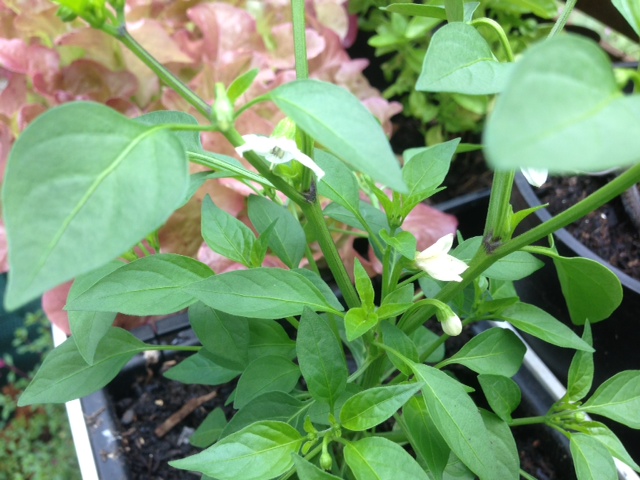 I’ve always been astounded by the power of plants. Whether it’s the inherent medicinal properties of unassuming garden stalwarts, like willow bark containing an aspirin precursor, or wild garlic used by bears to deter fleas, or how the smell of lavender relaxes the inhaler. I could go on and on and I probably will.
I’ve always been astounded by the power of plants. Whether it’s the inherent medicinal properties of unassuming garden stalwarts, like willow bark containing an aspirin precursor, or wild garlic used by bears to deter fleas, or how the smell of lavender relaxes the inhaler. I could go on and on and I probably will.
Nature has all the answers and yet humans still don’t seem to really appreciate that. Most of our medicines came from plants. The knowledge bridges the gap between man and beast and the ancient remedies span generations, passed down from the ancestors for centuries, only to be lost, ridiculed and minimised by many. And yet the plant power still exists.
More worryingly is the fact that corporations driven by greed, money and power in general, have hijacked most strands of medicine, agriculture and life. Technology has taken over and our connection to nature diminishes by the day and yet throughout the millennia Mother Nature has nurtured, supported and fed and healed all the species on the planet to one degree or another.
The answers to all of our modern ails, most of which were caused by humans anyway, is to turn back to a more nature based, or nature respectful way of life.
Call it tree hugging, or bunny hugging if you will, but until we learn to respect nature and really revere the bounty it provides and start to protect our environment, we will never really progress where it matters. But I digress. Again! Sorry!
What I wanted to explore in the merry month of June is the power of the pepper plant, the chilli and it’s relatives. It’s possibly the widest grown crop in the world. That’s a surprise until you remember that the hot peppers are used around the world in delicious dishes such as Indian and Sri Lankan curries, Mexican chilli, Italian arrabbiata sauces for pasta, Thai chilli pastes, spicy Sichuan dishes and even polish fish paste. Not to mention the leaves, which are surprisingly edible and actually eaten as a vegetable in Filipino and Japanese cuisine and in Korean Kim chi and soups. In Bhutan the humble chilli is actually a staple fruit and widely used and sold for use in its curries and cuisine. And then there are the sweet peppers, which are part of the same family.
There are so many great reasons to grow chillies.
- They are really productive. Even if you are a real chilli aficionado, you probably won’t be able to eat all that you grow. Just two or three plants will provide enough spicy heat and colour to favour and heat a family’s food for a season or more. Each plant will make dozens of little fruit, which can be used green or allowed to ripen to red (or orange/yellow/purple depending on the cultivar).
- Chillies are really easy to grow. You can sow seed in early spring and raise a raft of weird and wonderful varieties. If you are an adrenalin junkie you can select a few that are off the scale in terms of heat, or if you prefer to concentrate on flavour you can choose to grow a huge variety of different types of your choice.
- If, like me, chillies were one of the things you didn’t get around to sowing or growing this season, then you can still buy a variety of ready grown cultivars from specialist growers, nurseries, garden centres and even plant sales. Most people that sow from seed will have grown too many plants and may well be ready to swap plants, or sell surplus locally. Check out the organic and sizzling hot pot luck chilli collection from Delfland Nurseries.
http://www.organicplants.co.uk/acatalog/Jill_s_Chillies_Selections.html - Chilli plants are pretty resistant to pests too, though surprisingly mice love to eat the seeds, so be warned. So they are one of the few crops that you can sow and grow with few problems.
Hot Stuff/ Chilli Facts
- The active ingredient in a chilli is Capsaicin and is found mostly around the seeds, it is used to create the heat in some topical treatments for muscle pain and arthritis.
- Most people assume that it’s the chilli seeds that create the heat. In fact, chilli seeds are inert; it’s actually the placenta that they are attached to that creates the heat.
- It’s used as a pest deterrent. You can use chilli powder around seedlings to protect from pests.
- Chilli juice is even used to scare away elephants away. Chillies are crushed and used to saturate ropes that are then wrapped around things that they don’t want elephants to trample. You can make your own rodent deterrent by mashing dried Habaneros into an oil carrier like sunflower oil.
- It also has an antibacterial and anti-inflammatory effect that is thought to relieve the symptoms of arthritis.
- Capsaicin has also been shown to inhibit the growth of some cancer cells.
- Chillies are used as a folk medicine for colds and flu and are packed with vitamin A, C and D.
- Chillies are thought to trigger the release of ‘feel good’ endorphins, which lift the spirits, some scientists to believe that chilli in the diet can be addictive.
- Ripe red chillies are twice as hot as green ones and dried ones are even hotter.


